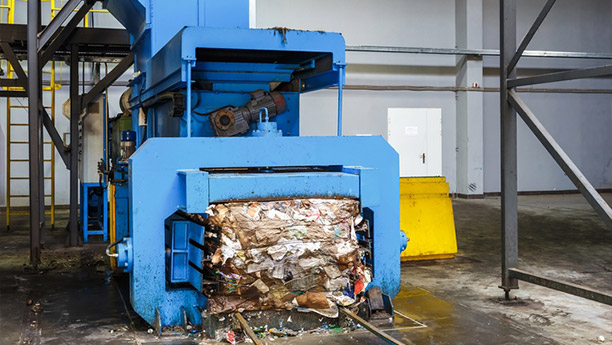Waste Compaction Techniques in Solid Waste Management
by Addison Rigg
Posted on 29-05-2023 09:54 AM

Waste compaction is a crucial aspect of solid waste management, contributing to efficient waste disposal and optimization of landfill capacity. Various techniques are employed to achieve effective waste compaction, ensuring that waste is compressed and densely packed for optimal disposal.
There are three commonly used techniques for waste compaction: the use of specialized compactors, layer-by-layer compaction, and compaction monitoring and control.
1. Compaction Equipment
Waste compactors play a significant role in waste compaction. Landfill compactors and transfer station compactors are specifically designed to compress waste effectively. Equipped with large steel wheels or tracks, these machines exert high pressure on the waste, compacting it as they move over the waste surface.
Landfill compactors are commonly used in landfill operations to compact waste within designated areas. They are designed to handle different types of waste, including municipal solid waste, construction debris, and industrial waste. The compaction equipment's robust construction and powerful compaction force enable efficient waste compression, reducing the waste volume and increasing the landfill's capacity.
Transfer station compactors, on the other hand, are utilized at waste transfer stations where waste is consolidated before transportation to landfills. These compactors ensure that waste is compressed and densely packed into transport vehicles, maximizing the amount of waste that can be transported in each load.
By utilizing specialized compactors, waste management operators can achieve effective waste compaction, minimizing the volume of waste and optimizing disposal efficiency.
2. Layer-by-Layer Compaction
Layer-by-layer compaction is a commonly employed technique in landfill operations. Waste is systematically compacted in layers, ensuring proper compaction density and minimizing settlement issues within the landfill.
After each layer of waste is placed, compactors traverse the area, compacting the waste to achieve the desired density. This layer-by-layer approach helps to distribute compaction forces evenly throughout the waste mass, reducing the potential for uneven settling and maintaining the stability of the landfill.
Layer-by-layer compaction promotes efficient waste compaction and ensures that the waste is adequately compressed before the subsequent layer is added. It helps prevent the formation of void spaces within the landfill, which can lead to structural instability and potential environmental issues. By implementing this technique, waste management operators can achieve consistent and uniform compaction, maximizing the capacity and longevity of the landfill.
3. Compaction Monitoring and Control
To ensure the effectiveness of waste compaction, monitoring and control systems are utilized. These systems play a crucial role in optimizing the compaction process and achieving the desired compaction density while minimizing the risk of over-compaction.
Compaction monitoring and control systems involve the use of various sensors and instruments to measure and monitor key parameters during the compaction process. These parameters may include waste density, compactor pass counts, and compaction depth.
By continuously monitoring these variables, waste management operators can make informed decisions regarding the compaction process. They can adjust compactor settings, alter pass counts, or modify compaction depth based on real-time data, ensuring that waste is adequately compacted without excessive force that may lead to an unnecessary settlement or other complications.
Compaction monitoring and control systems provide valuable insights into the compaction process, allowing waste management operators to optimize compaction efficiency, reduce operational costs, and minimize environmental risks.
Enhancing Compaction Efficiency for Sustainable Landfill Management
Effective waste compaction techniques are essential for proper waste disposal and efficient landfill management. Specialized compactors, layer-by-layer compaction, and compaction monitoring and control systems are instrumental in achieving optimal waste compaction.
By employing specialized compactors, waste management operators can effectively compress waste, reducing its volume and maximizing landfill capacity. Layer-by-layer compaction ensures uniform compaction density, minimizing settlement issues and maintaining landfill stability. Compaction monitoring and control systems enable real-time monitoring and adjustment of the compaction process, ensuring effective compaction while minimizing potential risks.
Implementing these techniques in solid waste management operations can significantly improve waste compaction efficiency, leading to enhanced landfill utilization, cost savings, and environmental sustainability.